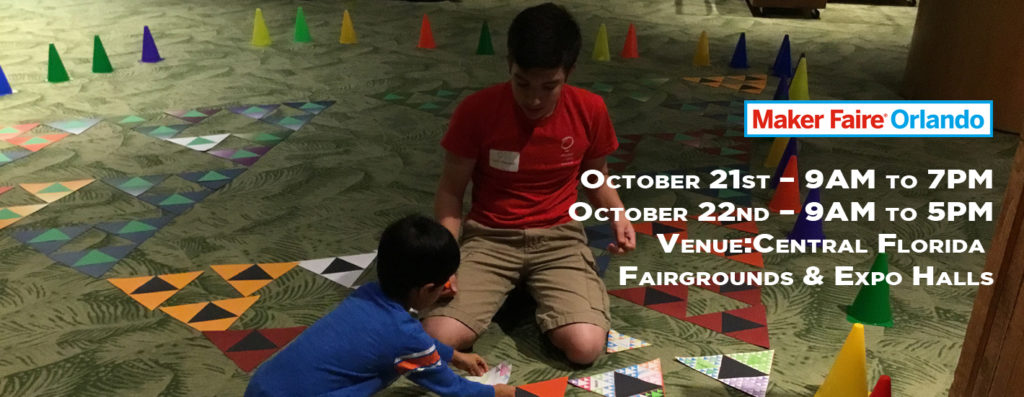TRIANGLETHON
We are collecting triangles to build the largest Sierpinski Triangle fractal ever built. Please participate in our mathematical community quilt by submitting your individual triangle(s).

Need volunteers to help with OMC Table at Maker Faire Orlando.
October 21st – 9AM to 7PM
October 22nd – 9AM to 5PM
Central Florida Fairgrounds & Expo Halls
ABOUT TRIANGLETHON
The Trianglethon is a mathematics and arts project devised to engage students to learn about fractals, repeating patterns, and the power of cooperation. Students, artists and math lovers everywhere are invited to create individual fractal triangles which will then be collected and assembled to create a giant Sierpinski Triangle.
We encourage your school, group, or organization to create sets of 3, 9, 27, or 81 triangles. Schools and organizations may place their logo in the large center triangle on each completed sheet if they wish.
About Fractals
What is a fractal?
A fractal is a never-ending pattern that repeats itself on all scales. Fractals are formed by repeating the same process over and over again. No matter how much you “zoom in” or “zoom out,” the pattern looks the same. This is called “self-similarity” – no matter where you look, the figure is similar to itself.
Fractals can be found in nature, such as in the pattern of the leaves of a fern or a branches of a tree, and they can be generated geometrically and algebraically. Geometric fractals are created by repeating the same pattern of shapes over and over, like the Sierpinski triangle. The fractals shown above are well-known geometric fractals. The top row shows the Gosper Island fractal, the next row is the Koch Snowflake, the next row is the Box fractal, and the bottom row is the Sierpinski Triangle.
The Sierpinski Triangle is the fractal that is the focus of the Trianglethon.
Algebraic fractals are generated by repeating certain algebraic formulas over and over and plotting the results on a graph. The Mandelbrot Set, shown below, is an example of an algebraic fractal.




